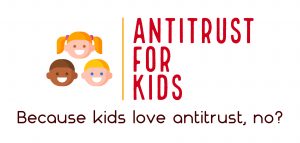Authors: Steven Cernak and Luis Blanquez
The FTC’s challenge of Altria Group’s proposed minority investment in JUUL Labs, Inc. (JLI) in April 2020 generated attention in both the mainstream media and the competition law press. Press coverage since that time has hit the latest developments but often missed the important issues this challenge raises: When can parties reach an anticompetitive agreement before they sign their official merger documents? Non-compete agreements have been pilloried lately, but are they anticompetitive even in a partial merger situation like this one?
This summary should help you prepare for the September 12 oral arguments in front of the Commissioners. You can read Steve Cernak’s more detailed article on these issues for the Washington Legal Foundation here.
The Parties and the Transaction
Altria, together with its subsidiaries, is the largest and one of the oldest cigarette companies in the U.S. In addition to its other products, it also sold e-cigarettes during the relevant period. JLI, is a smaller, newer company focused only on e-cigarettes.
As with most antitrust matters, especially merger investigations, market definition was contentious. Generally, e-cigarettes are electronic devices that aerosolize nicotine-containing liquid using heat generated by a battery as the user puffs. Open system e-cigarettes contain a reservoir that a consumer can refill with their choice of a nicotine-containing liquid. Closed system e-cigarettes have a container that already contains that liquid. Closed systems include cig-a-likes, which mimic the shape and look of a traditional cigarette, as well as pod products that have various shapes, including a shape like a USB thumb drive.
The e-cigarette category began growing rapidly about ten years ago. A few companies offered different options. Altria offered cig-a-like products and then pod products, but JLI offered only pod products. At the time of the challenged transaction, pods were the dominant choice of consumers, with JLI’s product the market leader.
While sales of pods, especially JLI’s pods, grew strongly at the end of 2017, Altria was only selling cig-a-likes and their sales fell. For regulatory reasons, Altria sought to purchase an existing pod product because it couldn’t develop its own product in a reasonable timeframe. In late 2017, it licensed the rights to a Chinese pod product and rushed it to market in early 2018.
Altria then approached JLI in early 2018 about an acquisition. By the end of July, the up-and-down negotiations centered around a multi-billion-dollar investment by Altria in exchange for a minority interest in JLI, possibly a non-voting interest convertible to voting after antitrust clearance. (An acquisition of non-voting securities does not require Hart-Scott-Rodino approval; conversion of such securities does.) At this point, the parties were far from reaching a deal, but began to discuss two other items that would lead to the FTC’s challenge of the eventual transaction.
The ironic first issue was how the parties could obtain antitrust clearance for the entire transaction. The parties’ term sheet described cooperation with the FTC and agreement to any “concessionary requirements of the FTC” related to Altria’s e-cigarette business. That is, the parties agreed that Altria would “divest (or if divestiture is not reasonably practicable, contribute at no cost to [JLI] and if such contribution is not reasonably practicable, then cease to operate” Altria’s e-cigarette business. JLI did not want to compete with Altria because Altria, as a major JLI shareholder, would have access to important JLI information. JLI’s executives later testified that they expected the FTC to oversee this process.
Second, in exchange for regulatory aid, Altria would agree to not compete with JLI’s e-cigarette products. Again, JLI didn’t want Altria’s to access sensitive JLI information when performing these services would allow Altria to improve its current e-cigarette products (before divestiture) or develop better new ones.
While negotiating over financial considerations and Altria’s voting rights, the parties continued to refine these two items. In later term sheets, the requirement that Altria “cease to operate” its e-cigarette assets disappeared while the requirement that Altria either contribute those assets to JLI or divest them remained.
Negotiations broke down in early September, but improved in October as Altria came around to terms much closer to JLI’s proposals. In early December, Altria announced that it was pulling its remaining e-cigarette products from the market, allegedly to conserve costs for product development or to invest in JLI. The parties finally reached an agreement later in December. Altria then ceased its other e-cigarette development efforts.
The Challenge and Initial Decision
On April 20, 2020, the FTC issued a two-count administrative complaint against the parties. Count I alleged an unreasonable agreement by which Altria agreed not to compete with JLI in the e-cigarette market “now or in the future” in exchange for the ownership interest in JLI. Specifically, that agreement took the form of the non-compete provisions of the written agreement as well as an agreement to exit the market reached during negotiations as a “condition for any deal.” Count II alleged that the transaction, including the agreed upon market exit by Altria and the written non-compete provisions, violated Clayton Act Section 7’s prohibition of mergers that “substantially lessen competition” in the relevant market.
 The Antitrust Attorney Blog
The Antitrust Attorney Blog












